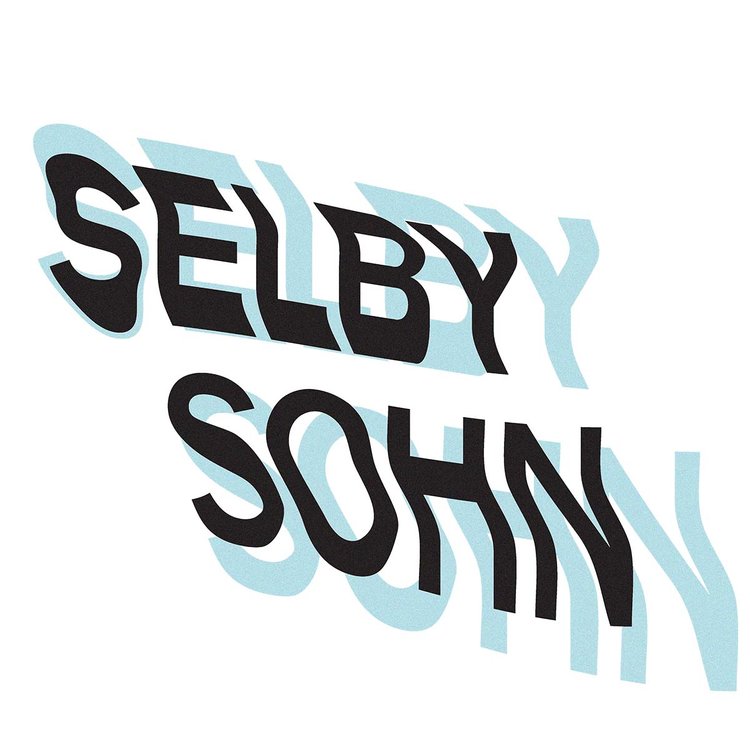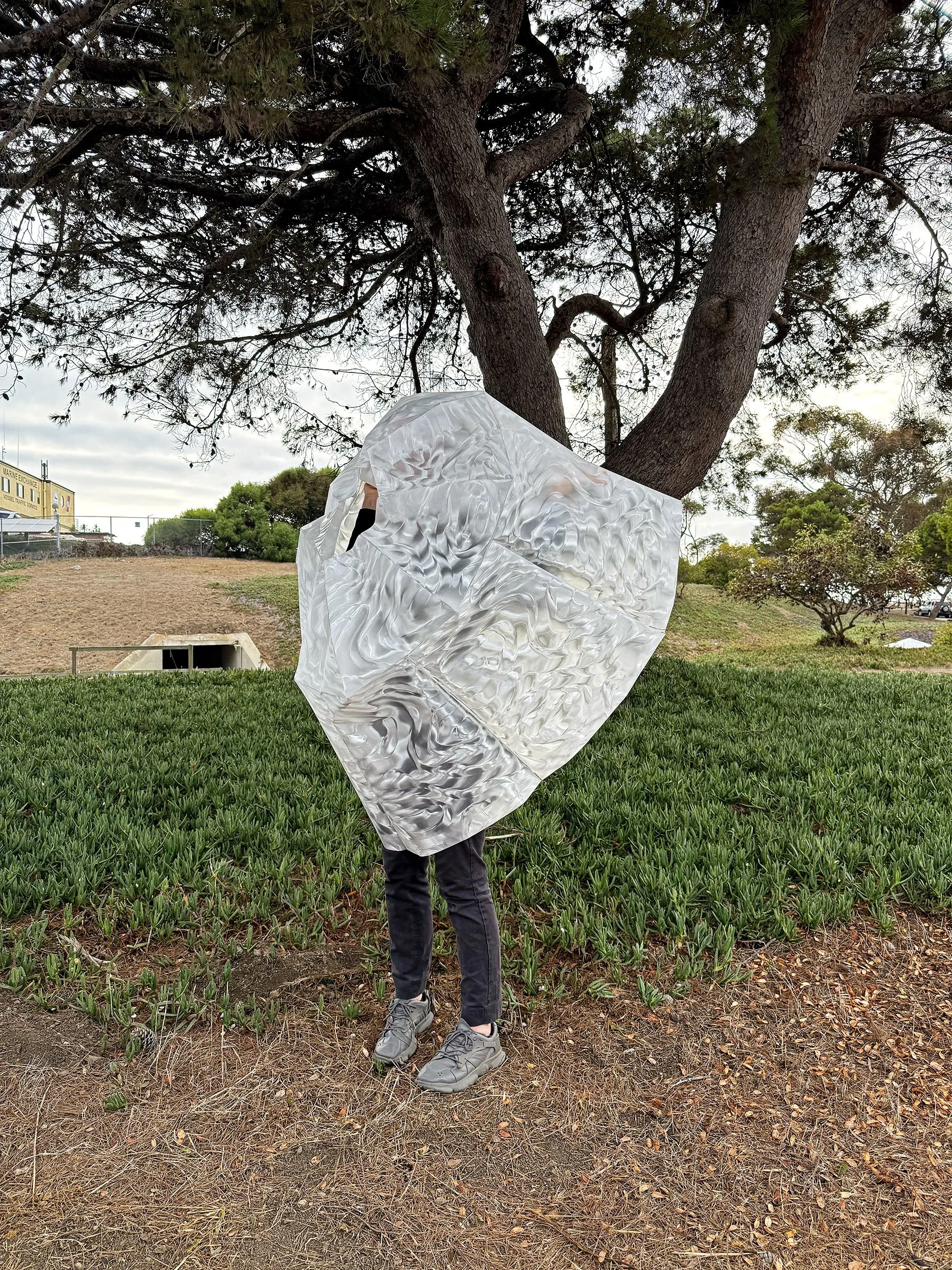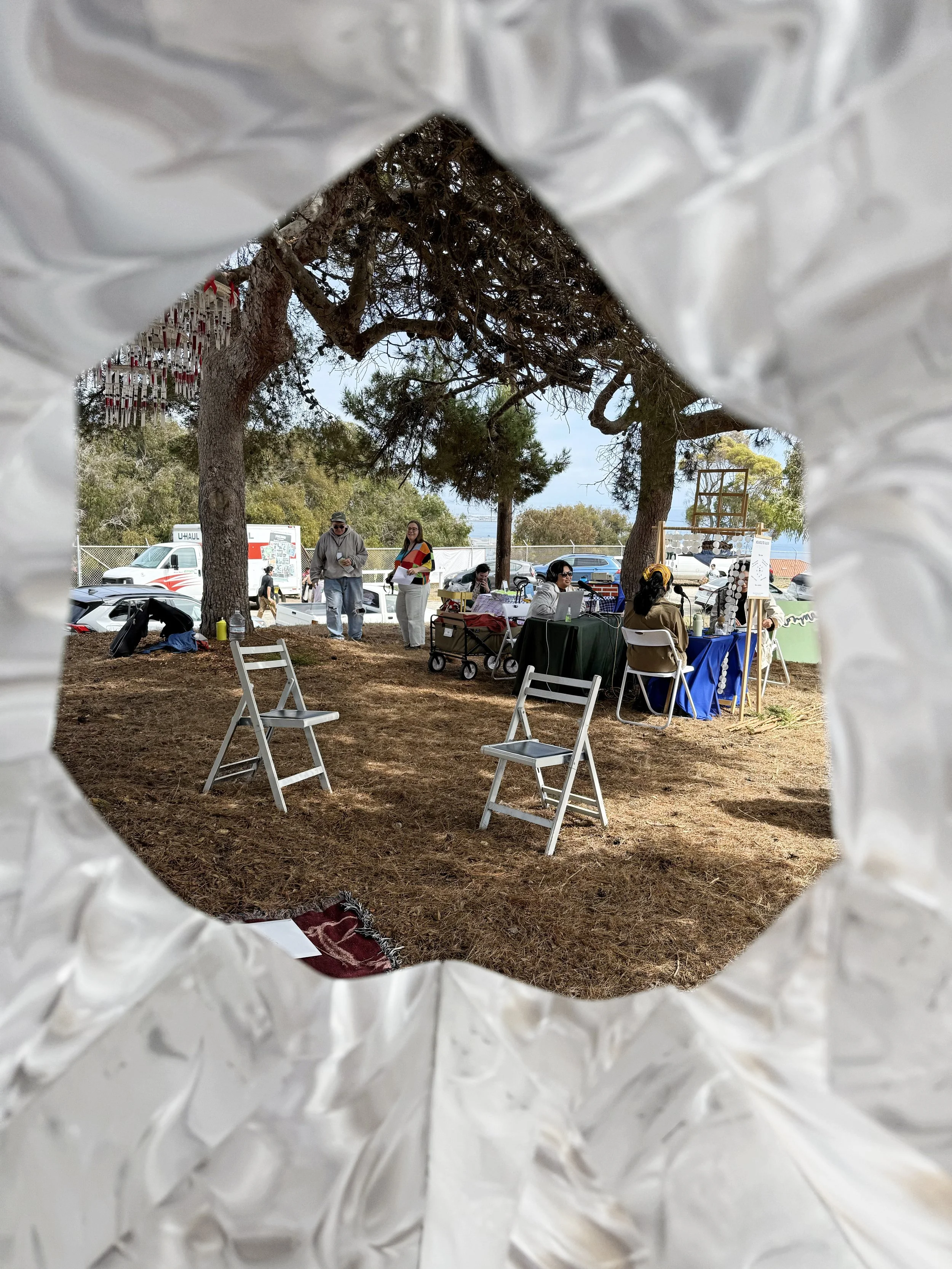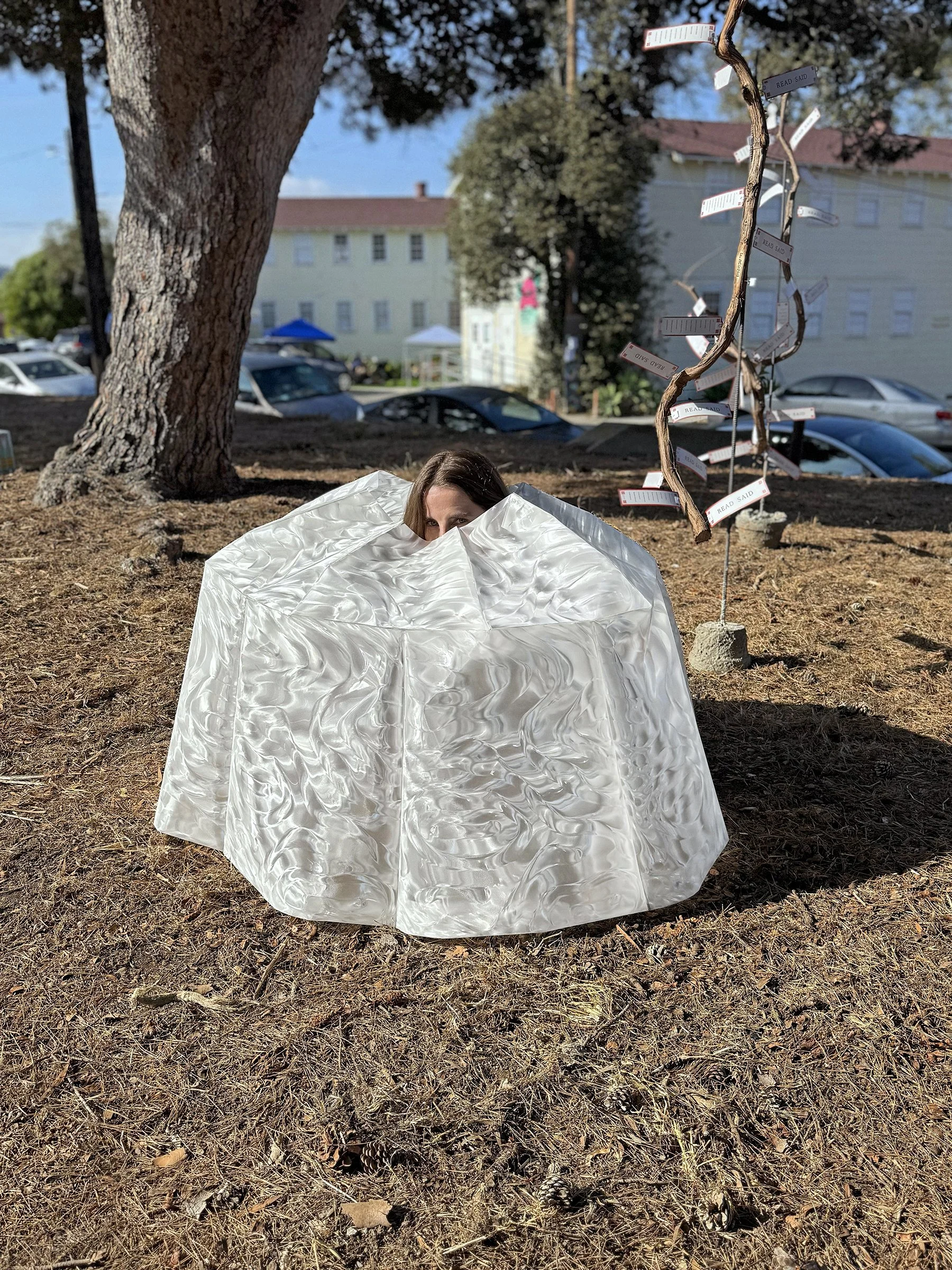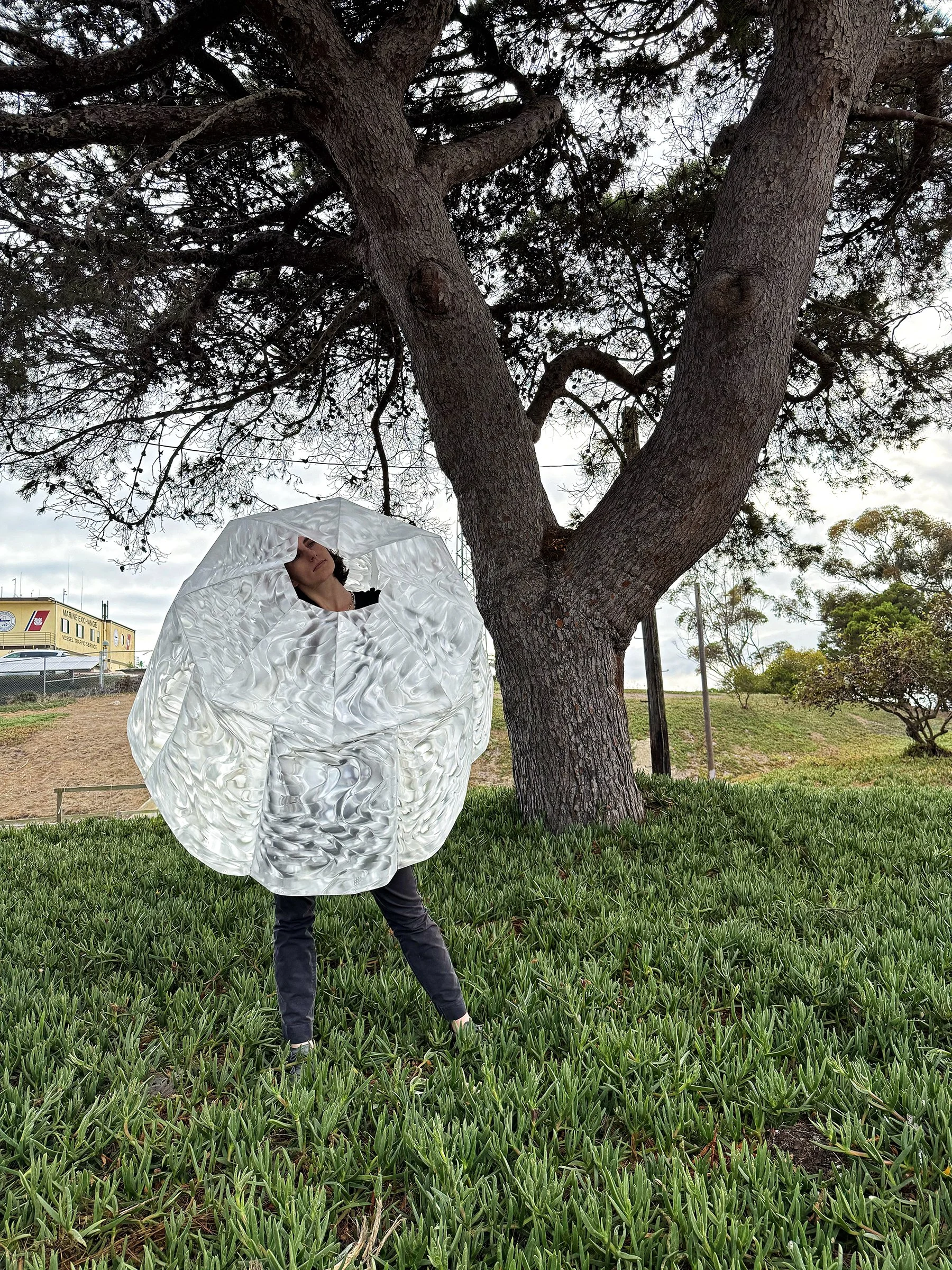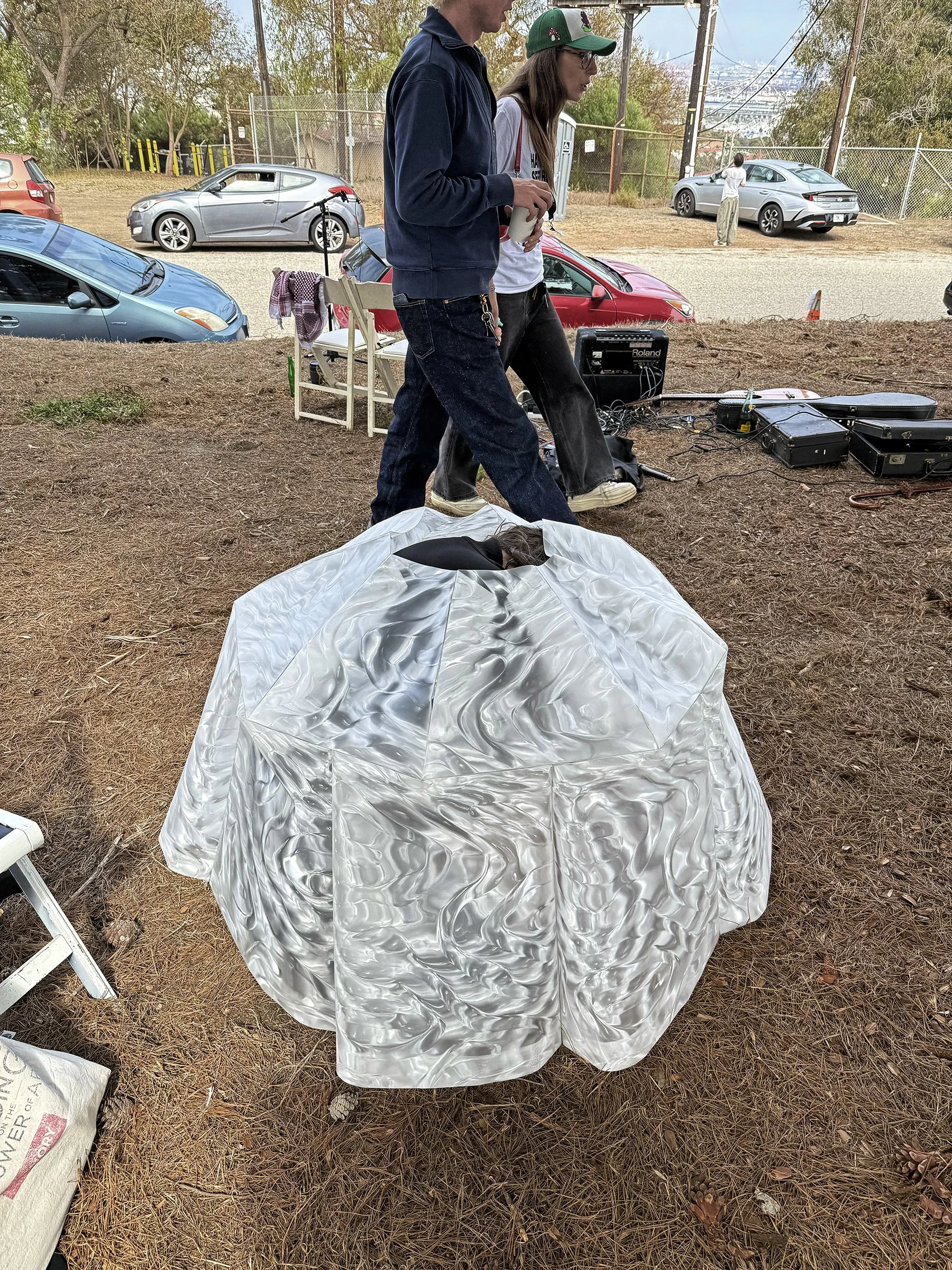Mouth Watering (2025)
Performed at Other Places Art Fair, San Pedro
An Oculus is a domed ceiling with a hole in the center, allowing the sky and all its elements — sunlight and snow — to enter a space. The first time I saw an Oculus was 16 years ago, and I loved seeing the outside infiltrate the interior. It started raining, and the ground became wet. When we were kids, my sister and I played outside in the rain, dancing, splashing in puddles, creating shapes with our hands in rushing water. We were unaware that the rain was something to avoid. Now, when it rains, I stay inside and I wonder why. I think of immobility, how often my gaze fixes on the tiny slick surface of a cell phone screen. I feel stuck in what I call Pavlov’s internet — the mouth-watering expectation that never becomes the thing itself. Our expectations that supplant the thing itself! We’ve settled for the image. I came up with the roaming Oculus when reading the above quote on EMDR (Eleni Stecopoulos, Dreaming in the Fault Zone). I thought of my anxiety, and wanted a physical way to escape. As the image in the mind is not always the image in reality, I want to re-root myself in my surroundings. I think of the portable Oculus as a returning to the embodied act of image making — the opening that allows for the rain. Joyce Burstein writes, “In ancient architecture it connected the universe to the interior through light. Your Oculus looks like it’s made of light!” My Oculus is mobile, tactile, tensile, and shiny. It is a space that can be shared. The hole is an aperture, a frame, a portable James Turrell Skyspace, a relation to the act of seeing — seeing, as a way of visiting, as a form of navigation.
